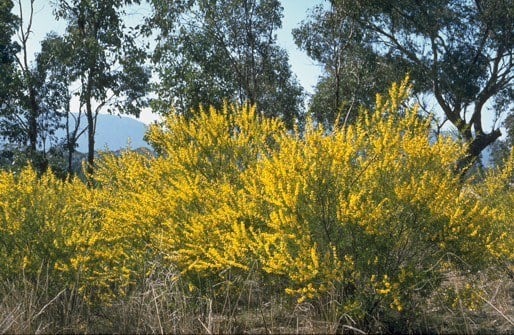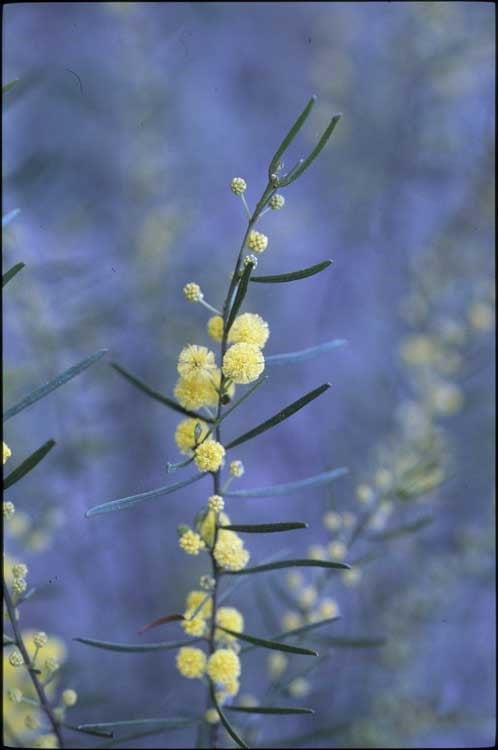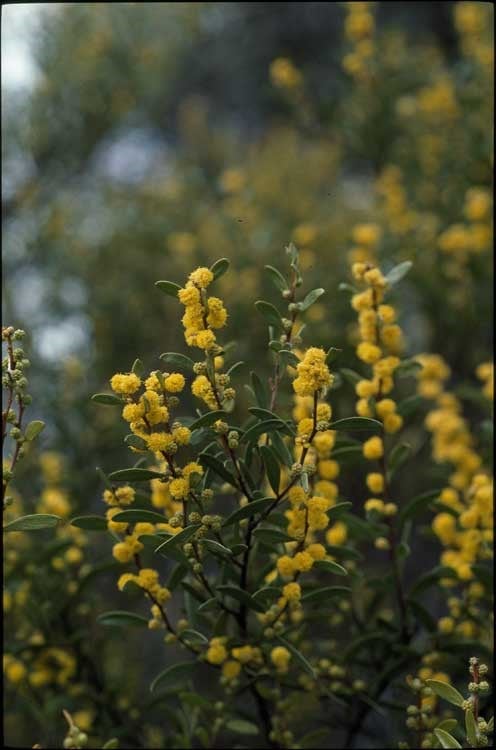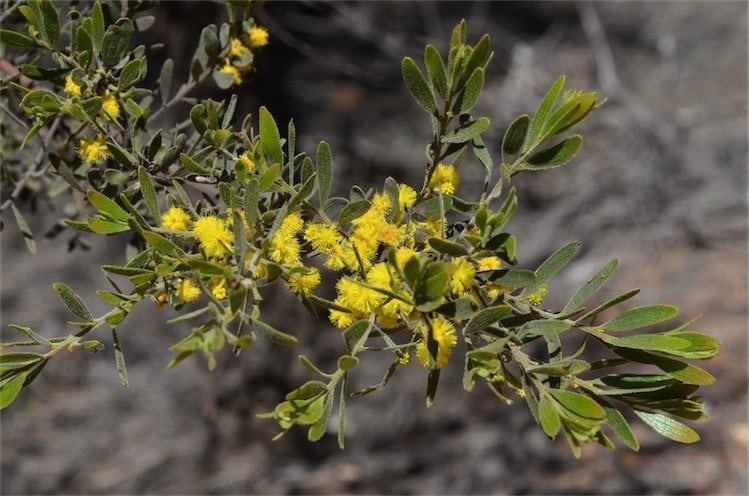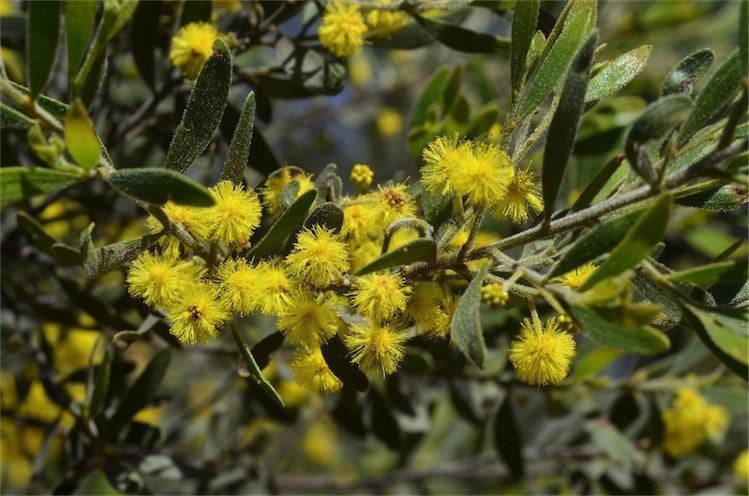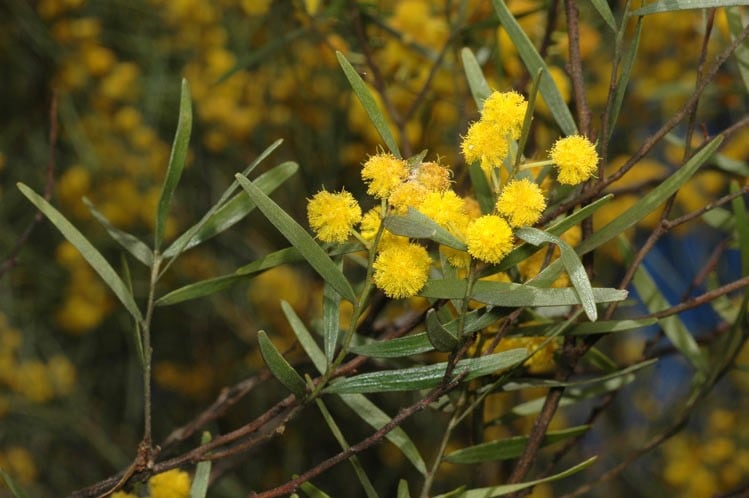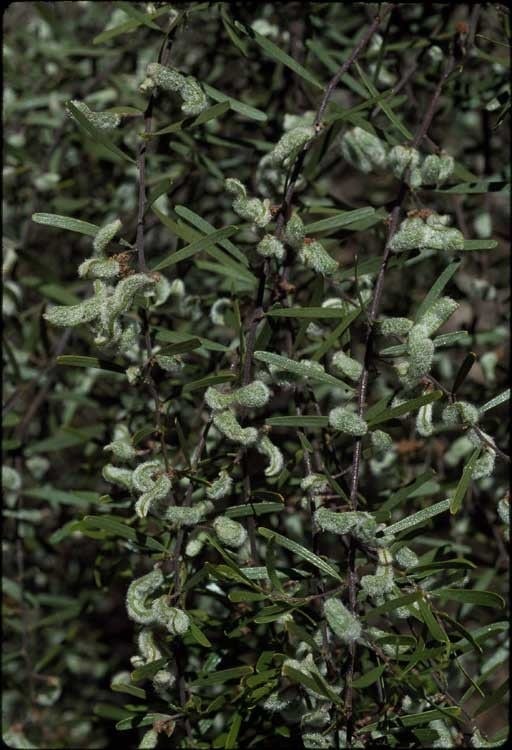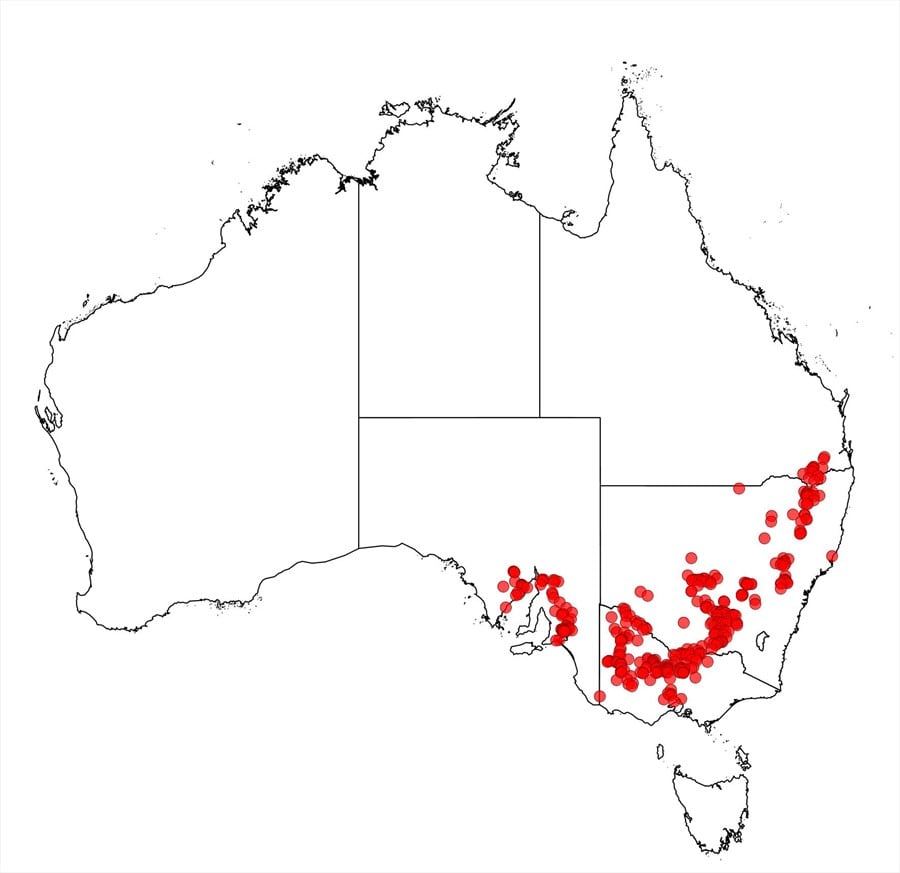Acacia montana Benth.
WATTLE
Acacias of Australia
Common Name
Mallee Wattle
Family
Fabaceae
Distribution
Occurs in south-eastern Australia from the Eyre Peninsula, S.A., through Vic. and N.S.W. to near Stanthorpe in south-eastern Qld; it is most common on the inland slopes of the Great Divide and adjacent plains in N.S.W. and Vic.; there is an isolated occurrence from near Angledool Lake, N.S.W.
Description
Viscid shrub or tree 1–4 m high. Branchlets subglabrous to moderately puberulous, with hairs often antrorsely curved and ±appressed. Phyllodes narrowly oblong to linear or narrowly elliptic, sometimes oblong-oblanceolate, 1–4.5 cm long, 2–7 mm wide, obtuse, rather thin, sometimes obscurely resinous-punctulate, glabrous or subglabrous, with 2 main often yellowish nerves per face, and minor nerves few and forming an often obscure longitudinal reticulum; gland not prominent, 0.5–2 mm above pulvinus. Inflorescences simple, 1 or 2 per axil; peduncles 3–10 mm long, glabrous or puberulous; basal bract persistent; heads globular to shortly obloid, c. 25-flowered, golden. Flowers 5-merous; sepals 1/4–1/2-united. Pods linear or narrowly oblong, 2–5 cm long, 2–4 mm wide, coriaceous to thinly crustaceous, usually villous. Seeds longitudinal, oblong, 3–4 mm long, ±shiny, dark brown; aril folded at end of seed.
Habitat
Grows in a variety of soils, often in open forest or tall shrubland.
Specimens
S.A.: c. 10 km W Murray Bridge, D.J.E.Whibley 4198 (PERTH); Uno Ra., NW end, D.J.E.Whibley 7863 (AD). Qld: Yuraraba, L.Pedley 4234 (BRI, PERTH). NSW: 18.7 km from Merriwa–Cassilis Rd on Wollar Rd, R.Coveny 2434 (CANB, PERTH). Vic.: 6 km ESE Rushworth, T.B.Muir 6984 (MEL, PERTH).
Notes
A member of the A. verniciflua complex and sometimes resembling A. rostriformis which is distinguished especially by its phyllodes with usually obvious, shallow glandular pits and minor nerves not forming a reticulum. Its phyllodes are sometimes similar to those of A. ixiophylla, a species readily distinguished, inter alia, by its shortly racemose inflorescences. It also resembles broad phyllode forms of A. wilhelmiana, which are distinguished by their light golden puberulous peduncles and non-reticulate phyllodes. Sometimes also resembles A. sabulosa.
G.Bentham published the name A. montana in 1842, presumably between 11 June and 1 July of that year. Although I.C.Nielsen, Bull. Mus. Natl. Hist. Nat., B, Adansonia no. 3: 327 (1983), lists ‘A. montana Junghuhn, Nat. Tijdschr. Ned. Ind. 5: 626 (1842)’ it appears that the latter name (= Albizia montana) was not published until 1843 (K.Wilson, pers. comm.).
Putative hybrids between A. aspera and possibly A. montana have been recorded from the Bendigo district, Vic., fide A.B.Court, in J.H.Willis, Handb. Pl. Victoria 216 (1973). The NSW record of A. menzelii by G.M.Cunningham (Pl. W New South Wales 366 (1981)) is based on a misidentification of a specimen (G.Cunningham & P.Milthorpe 2729, NSW PERTH) which represents a taxon of uncertain status but perhaps is a hybrid involving A. montana (these two species are thought to hybridise in the Monarto area of S.A.). Acacia montana is also thought to hybridise with A. paradoxa in the southern Flinder Ra., S.A.
Specimens with glabrous pods are uncommon and were described as var. psilocarpa. Formal recognition of this variety does not seem warranted.
FOA Reference
Data derived from Flora of Australia Volumes 11A (2001), 11B (2001) and 12 (1998), products of ABRS, ©Commonwealth of Australia
Author
Minor edits by B.R.Maslin
B.R.Maslin
This identification key and fact sheets are available as a mobile application:
URL: https://apps.lucidcentral.org/wattle/
© Copyright 2018. All rights reserved.

